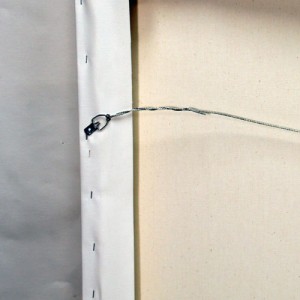Remarkable Canvases of the World
Canvas has a storied history, and it’s no surprise. Anything that’s been around as long as canvas and that’s so deeply associated with some of the most creative folk ever to live is bound to have a remarkable past. A rather particularly entertaining part of that story involves the most unique and sometimes spectacular instances of canvas use ever undertaken by man. Today we’re going to ditch the details about canvas creation and dive deep into these, some of the most massively important canvases ever to be. This is the first in a two-part look at the most extreme canvases in history, and we’re about to get seriously involved in extraordinary canvassing. In this particular post, we’re going big. From a canvas so large that hundreds of people can (and did) stand on it, to the most expensive canvas in the world, you’re about to see the most extreme canvases ever made.

The Most Expensive Canvas Ever
The most expensive canvas in the world is a subject of intense interest for quite a lot of people, and not all of them are the people you’d think. While a large amount of folk in the actual art community are certainly interested, it’s the collectors, the auction houses and the generally very wealthy that are the first to put a price on any canvas that earns this distinction. And it’s a distinction that changes fairly often, with dozens upon dozens of past recipients left in the dust by the next great purchase. Run an internet search on the subject, and you’ll come up with mostly wrong answers, because the articles are from too long in the past.
If you were to find a list of expensive paintings current to the writing of this article, you’d find that the most recently lauded “most expensive canvas” is Cezanne’s The Card Players, which was bought in 2012 for a massive $250 million. A royal family from the nation of Qatar bought the painting, which blasted away the previous record of $159.4 million for Jackson Pollock’s No. 5, 1948. Worth noting, however, is van Gogh’s Vase with Fifteen Sunflowers, which was sold for $39,921,750 in 1987, more than quadrupling the previous record for Andrea Mantegna’s Adoration of the Magi in 1985, which went for $12 million.
A Canvas So Big It Could Host a Football Game
It’s a running joke with artists that size equals money, but it seems to be a false one, as the largest paintings in history are nowhere near the most expensive. As of March 2012, the distinction of the largest canvas painting in history belongs to a 42,000 square foot canvas known as Colours of Pakistan, which was painted by students from various institutions of Punjab. This remarkably large canvas had to be stood upon to receive paint, and it was meant to display Pakistan’s culture, especially its achievements in sports. The painting beat the previous record of 25,000 square feet, which was also set by students, this time from Nigeria.

One Artist’s Dream
The Pakistani painting is, however, a collaboration, and when it comes to individual achievements in massive canvas, an artist named Ando holds the record. Ando’s canvas measures 100 meters by 12 meters and is a landscape fittingly known as The Big Picture. This painting is an acrylic that displays a Southern American landscape complete with 1500 hills, 3000 clouds, 2000 buildings and over 1,000,000 saltbush plants.
The thing about canvas is, it’s always changing. Give it a year or two, and one of these monsters will be surpassed in its particular category. As canvas is and is likely to remain the top dog among artistic surfaces, people will ever be trying to top the last record holder. We just can’t wait to see who comes up as the newest best-selling canvas, or who goes for an even more insanely huge painting platform. But size isn’t everything! Stay tuned for the next part to this two-part series, which deals with those canvasses that are spectacular, but not for their size or the dent they make in their owner’s pocket.